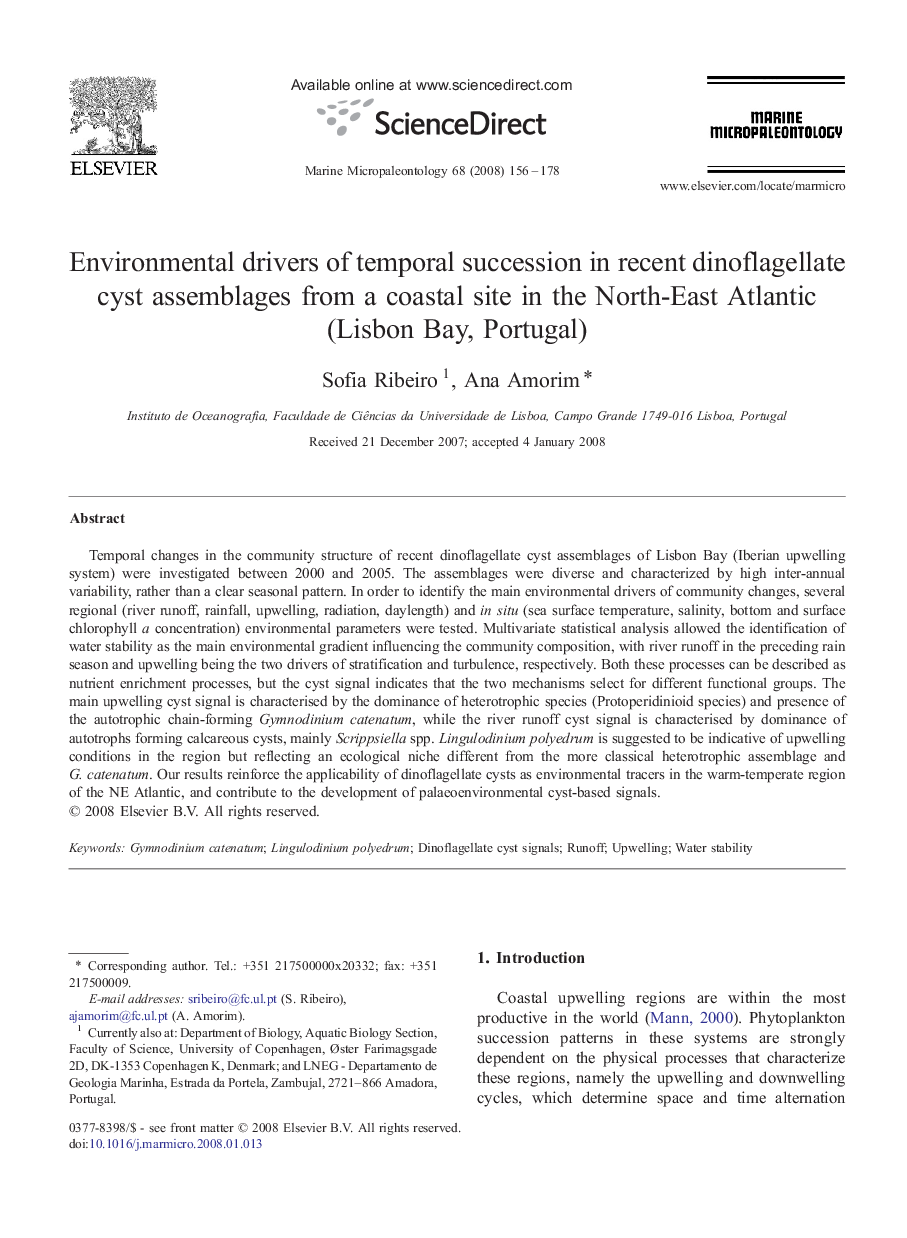| کد مقاله | کد نشریه | سال انتشار | مقاله انگلیسی | نسخه تمام متن |
|---|---|---|---|---|
| 4749387 | 1642221 | 2008 | 23 صفحه PDF | دانلود رایگان |

Temporal changes in the community structure of recent dinoflagellate cyst assemblages of Lisbon Bay (Iberian upwelling system) were investigated between 2000 and 2005. The assemblages were diverse and characterized by high inter-annual variability, rather than a clear seasonal pattern. In order to identify the main environmental drivers of community changes, several regional (river runoff, rainfall, upwelling, radiation, daylength) and in situ (sea surface temperature, salinity, bottom and surface chlorophyll a concentration) environmental parameters were tested. Multivariate statistical analysis allowed the identification of water stability as the main environmental gradient influencing the community composition, with river runoff in the preceding rain season and upwelling being the two drivers of stratification and turbulence, respectively. Both these processes can be described as nutrient enrichment processes, but the cyst signal indicates that the two mechanisms select for different functional groups. The main upwelling cyst signal is characterised by the dominance of heterotrophic species (Protoperidinioid species) and presence of the autotrophic chain-forming Gymnodinium catenatum, while the river runoff cyst signal is characterised by dominance of autotrophs forming calcareous cysts, mainly Scrippsiella spp. Lingulodinium polyedrum is suggested to be indicative of upwelling conditions in the region but reflecting an ecological niche different from the more classical heterotrophic assemblage and G. catenatum. Our results reinforce the applicability of dinoflagellate cysts as environmental tracers in the warm-temperate region of the NE Atlantic, and contribute to the development of palaeoenvironmental cyst-based signals.
Journal: Marine Micropaleontology - Volume 68, Issues 1–2, July 2008, Pages 156–178